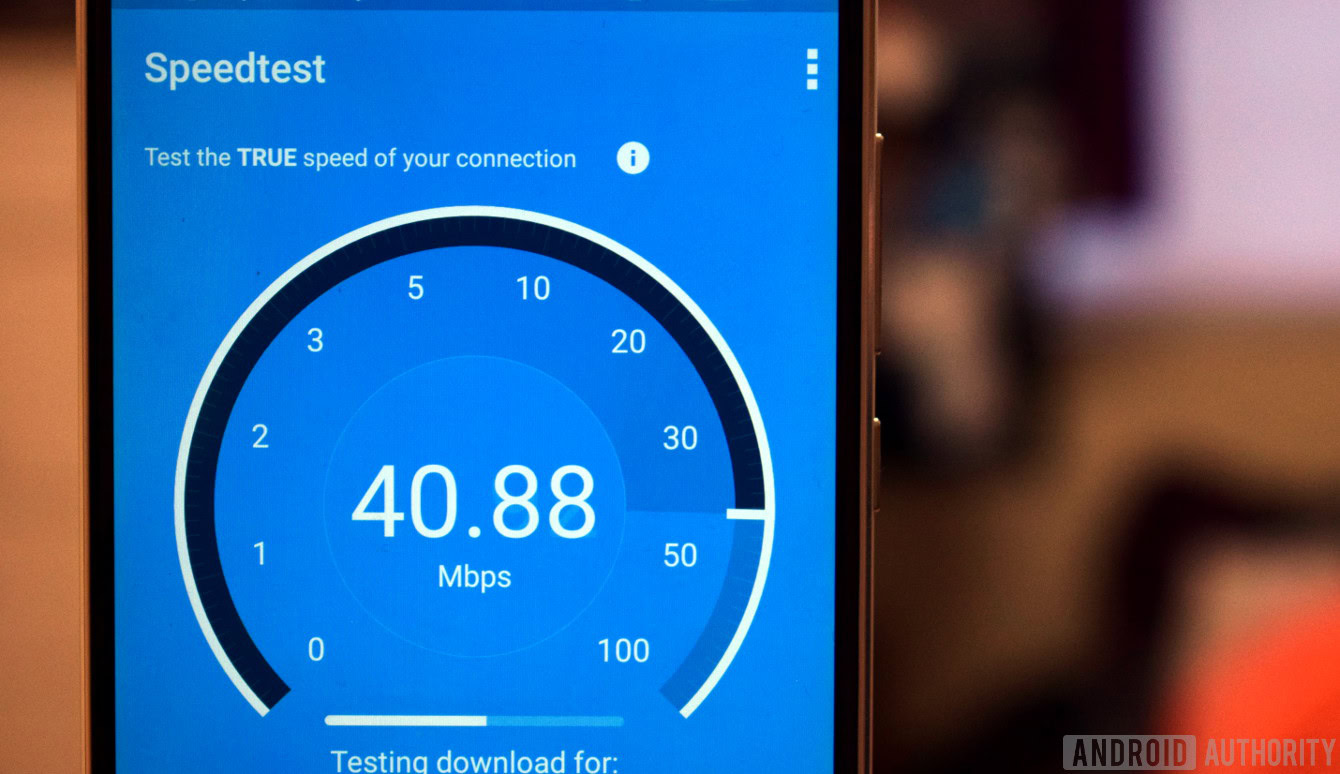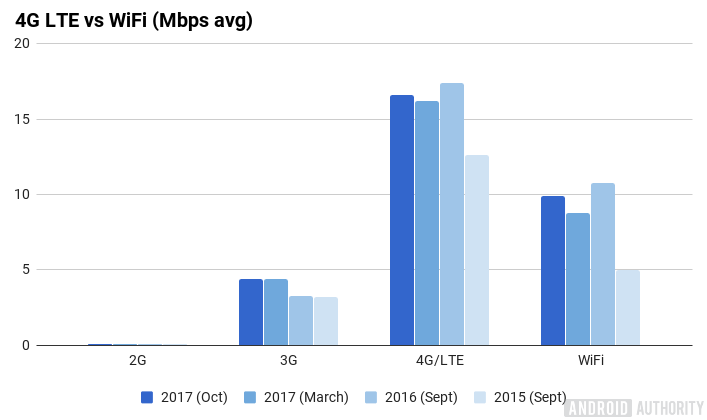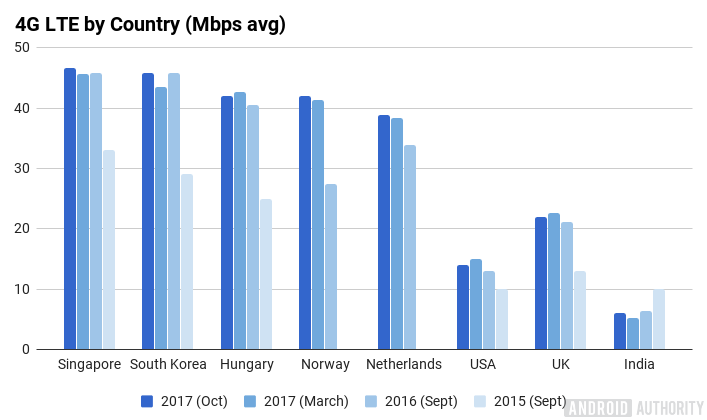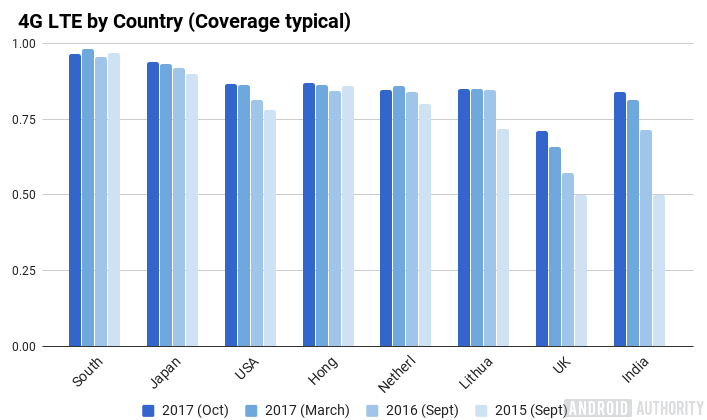Affiliate links on Android Authority may earn us a commission. Learn more.
Report: Global 4G LTE speeds stuck at a stand still

OpenSignal is back with another biannual look at the state of the world’s 4G LTE networks, gathered using its crowdsourced data from close to 4 million test devices out in the wild, contributing over 50 billion measurements. As always, there’s a mixed bag of results for various countries but on the whole the picture remains mostly unchanged.
Asia Pacific countries, notably South Korea and Japan, continuing to show the way with the fastest and most robust coverage around, Eastern Europe’s heavy investment in infrastructure keeps them near the head of the pack, and the US remains slower than average, but with very impressive coverage for a country of its size. Which leads up to perhaps the most intriguing discovery from this latest report – global LTE speeds have hit a brick wall.
LTE grinds to a halt
According to OpenSignal’s data, average global 4G LTE speeds have been mostly static since midway through 2016. Hovering between 17.5 Mbps and 16.2 Mbps over the past year or so, coming in at 16.7 Mbps at the latest country. We see similar trends for average global 3G and WiFi speeds also, with very little meaningful movement in speeds since back in 2015.

The end to the improvements in 4G LTE speeds can also been seen in the fastest networks in the world, with no country yet able to crack the 50 Mbps mark. Singapore, South Korea, Hungary, and others have seen speeds remain mostly stable for well over a year. This is likely due to countries and carriers having previously made investments in LTE-Advanced to boost speeds, but we’re now in the intermediate period before the arrival of LTE-Advanced Pro and 5G to boost peak speeds further.

This change in trend suggests that leading carriers are already in need of new technologies to drive consumer speeds higher still. Unfortunately, the world’s first commercial 5G networks aren’t expected to come online until 2019 and 2020, and it will take considerably longer than that for global adoption to roll out. However, LTE-A Pro will likely act as a pre-5G deployment for many carriers, offering wider carrier aggregation and unlicensed spectrum support.

Although on a global scale 4G LTE speeds may not have changed significantly, countries still developing their infrastructure are struggling to maintain speeds as additional consumers come online. India’s typical 4G speeds have fallen from 10 Mbps in 2015 to just 6.13 Mbps, owing to strains on capacity. Chile paints a similar picture, with a significant drop in LTE speeds over the past year but up to a 162 percent growth in 4G connections. In the longer term speeds will return to a positive trend, but it’s going to require additional investments and time.
Coverage keeps improving
The report isn’t all bad news for the wireless industry though. The latest wave of infrastructure investments is paying off with vastly improved 4G LTE coverage in some countries.
India, again, is an example of a country that has quickly risen from less than 50 percent availability to matching coverage leaders like the USA and Hong Kong in just a couple of years. By comparison, the UK remains well behind the curve, but is still seeing steady improvements in coverage.

The majority of OpenSignal’s 77 participating countries now fall within 60 to 80 percent 4G LTE coverage, in terms of consumer use time. There’s clearly still heavy reliance on 3G networks across the world, with many consumers spending 15 percent or more of their time on a 3G connection. But this reliance is steadily decreasing across the globe.
Final words
With average global 4G LTE speeds hovering in the 10 to 25 Mbps range and coverage well over 60 percent in most countries, wireless data is providing its best experience to consumers around the world so far. However, there’s a growing gap between the most advanced and newly developing networks in terms of speeds.
Early 4G adopters are already looking towards next-generation LTE-A Pro and 5G networks in order to offer new peak speeds for consumers, but 5G remains years away at this point. At the developing end, infrastructure remains under strain due to the sheer number of new users online, but this will likely be alleviated in time. So although speeds may have stood still over the past twelve months or so, we will likely see average global speeds resume their upward trends in the near future, in both developed and developing networks.
For a closer look at the data and further analysis, be sure to check out OpenSignal’s full report here.